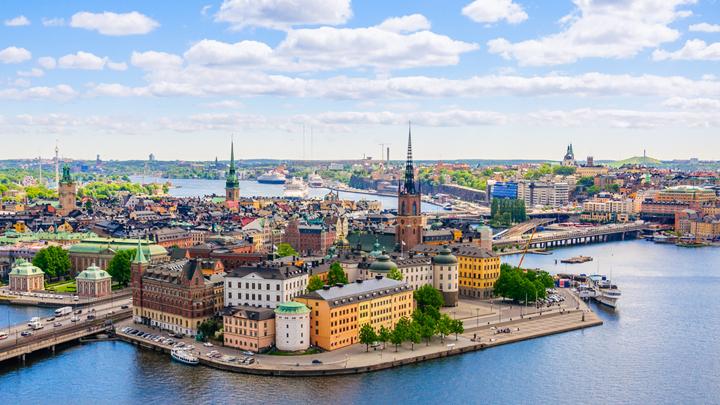TEMPO.CO, Jakarta - As the world’s third-largest continent by population, Europe is home to over 740 million people. Unsurprisingly, its vibrant cities serve as major population centers, bustling with life, culture, and opportunity.
Moscow, Paris, and London are cited as the largest cities in Europe as of 2025. These metropolitan giants are not only home to millions and serve as multi-layered enduring hubs, but also stand as reflections of Europe’s diverse heritage and centuries-to-millennia of history.
Here are the 10 largest cities in Europe, according to WorldAtlas:
1. Moscow, Russia - 12,658,000
Moscow is the largest city in Europe, owing much of its large population to its rich history. First mentioned by name in 1147, the city has gone through numerous significant events ever since. From the Mongol invasion in the 13th century, rapid population growth, to devastating fires and the infamous 1812 invasion by Napoleon, Moscow has endured and evolved through it all. In 1922, it became the capital of the newly established Soviet Union, and after the USSR dissolved in 1991, Moscow retained its status as the capital of the Russian Federation.
2. Paris, France - 11,215,000
Once a small Gallic village, Paris has positioned itself as one of Europe's largest cities. Known as the “City of Light,” Paris has long been a multi-layered global hub for finance, diplomacy, gastronomy, and more since the 17th century. By 1870, as noted by Britannica, the Parisian population exceeded 1,000,000 and continued to grow swiftly after World War II. Though it experienced a steady decline between 1931 and 2012, the 21st century has seen a gradual increase due to rising birth rates.
3. London, United Kingdom - 9,626,000
Ranked as one of the wealthiest cities in the world, London experienced significant population growth during the final decades of the 18th century, driven by a combination of factors. Among them is that by the 1840s, children born in the city had a higher life expectancy, largely due to improved hygiene and better child-rearing practices. In addition, both regional and international migration, whether economic or forced, contributed to a notable increase in the city's population.
4. Madrid, Spain - 6,733,000
Made the official national capital by Philip III in 1561, Madrid quickly became an influential city. Between 1530 and 1594, its population grew dramatically from 4,060 to 37,500. Moreover, the relocation of the royal court to Madrid attracted many Spanish and foreign artists, transforming the city into Spain’s artistic and literary hub. Madrid’s standout landmarks, like Plaza Mayor and Paseo del Prado, serve as enduring evidence of its cultural and historical importance.
5. Barcelona, Spain - 5,674,000
Another Spanish entry on the list, Barcelona, owes much of its early population growth to the Roman Empire, which established the city as a colony known as Barcino. By the medieval period, it became a flourishing trade center and political hub within the Crown of Aragon. In modern times, especially following industrialization in the 19th century, Barcelona saw massive urban expansion.
6. Saint Petersburg, Russia - 5,546,000
Founded in 1703 by Peter the Great, Saint Petersburg is Russia’s second-largest city by population. Although it was never officially declared the capital, it effectively served as such from 1713, when the royal court moved there, until 1918. The relocation of the court led many officials and citizens to move to Saint Petersburg as well. With its rich history, the city is home to numerous historic landmarks, including the renowned Hermitage Museum.
7. Rome, Italy - 4,311,000
Nicknamed The Eternal City, Rome has been one of the most important population centers in history for over two millennia. As the capital of the ancient Roman Empire, it once held sway over much of Europe, North Africa, and the Middle East. After a period of decline during the early Middle Ages, Rome experienced a cultural and urban revival during the Renaissance and has continued to grow steadily since. Today, it stands not only as Italy’s capital but also as a vibrant metropolis known for its unparalleled historical legacy and architecture.
8. Berlin, Germany - 3,573,000
During the Cold War, Berlin was divided by the Berlin Wall, with both sides being roughly equal in area. Following the reunification of the city, Berlin experienced a significant surge in population growth. Its historic role as the capital of Prussia, its location along the Spree River, and its status as Germany’s largest industrial hub have all contributed to making it an attractive place for people seeking new opportunities.
9. Milan, Italy - 3,157,000
As one of the largest cities in Europe by population, Milan’s growth can be traced back to the post–World War II era. In the 15 years following 1950, the city’s population surged by approximately 400,000, fueled largely by an influx of migrants from the impoverished southern and northeastern regions of Italy. After experiencing a decline, Milan saw a new wave of immigration beginning in the mid-1970s from outside Italy. Notable groups included migrants from Morocco, Egypt, and Ecuador.
10. Athens, Greece - 3,155,000
Not only is it one of the oldest cities in Europe, but Athens is also among the continent’s largest. Known as the cradle of Western civilization, Athens has an urban history dating back to before 3000 BC. Once the heart of Classical Greece, the city’s population boomed in the early 1830s due to an influx of refugees from Asia Minor. Today, Athens blends ancient heritage with modern urban life.
From ancient empires to modern megacities, these 10 largest cities in Europe each tell a unique story of growth, resilience, and human ambition. For a striking comparison, let’s take a look at the smallest cities in the world.
Editor's Choice: Top 10 Fun Countries to Visit for Relaxation
Click here to get the latest news updates from Tempo on Google News


















































